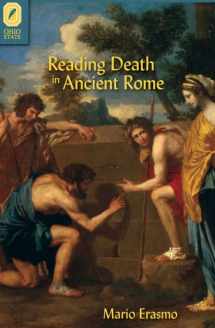
Reading Death in Ancient Rome
ISBN-13:
9780814210925
ISBN-10:
0814210929
Edition:
2
Author:
Mario Erasmo
Publication date:
2008
Publisher:
Ohio State University Press
Format:
Hardcover
320 pages
FREE US shipping
Book details
ISBN-13:
9780814210925
ISBN-10:
0814210929
Edition:
2
Author:
Mario Erasmo
Publication date:
2008
Publisher:
Ohio State University Press
Format:
Hardcover
320 pages
Summary
Reading Death in Ancient Rome (ISBN-13: 9780814210925 and ISBN-10: 0814210929), written by authors
Mario Erasmo, was published by Ohio State University Press in 2008.
With an overall rating of 4.5 stars, it's a notable title among other
books. You can easily purchase or rent Reading Death in Ancient Rome (Hardcover) from BooksRun,
along with many other new and used
books
and textbooks.
And, if you're looking to sell your copy, our current buyback offer is $0.46.
Description
In Reading Death in Ancient Rome, Mario Erasmo considers both actual funerary rituals and their literary depictions in epic, elegy, epitaphs, drama, and prose works as a form of participatory theater in which the performers and the depicters of rituals engage in strategies to involve the viewer/reader in the ritual process, specifically by invoking and playing on their cultural associations at a number of levels simultaneously. He focuses on the associative reading process—the extent to which literary texts allude to funeral and burial ritual, the narrative role played by the allusion to recreate a fictive version of the ritual, and how the allusion engages readers’ knowledge of the ritual or previous literary intertexts. Such a strategy can advance a range of authorial agendas by inviting readers to read and reread assumptions about both the surrounding Roman culture and earlier literature invoked through intertextual referencing. By (re)defining their relation to the dead, readers assume various roles in an ongoing communion with the departed. Reading Death in Ancient Rome makes an important and innovative contribution to semiotic theory as applied to classical texts and to the emerging field of mortality studies. It should thus appeal to classicists as well as to advanced undergraduate and graduate students in art history and archeology.


We would LOVE it if you could help us and other readers by reviewing the book
Book review

Congratulations! We have received your book review.
{user}
{createdAt}
by {truncated_author}


